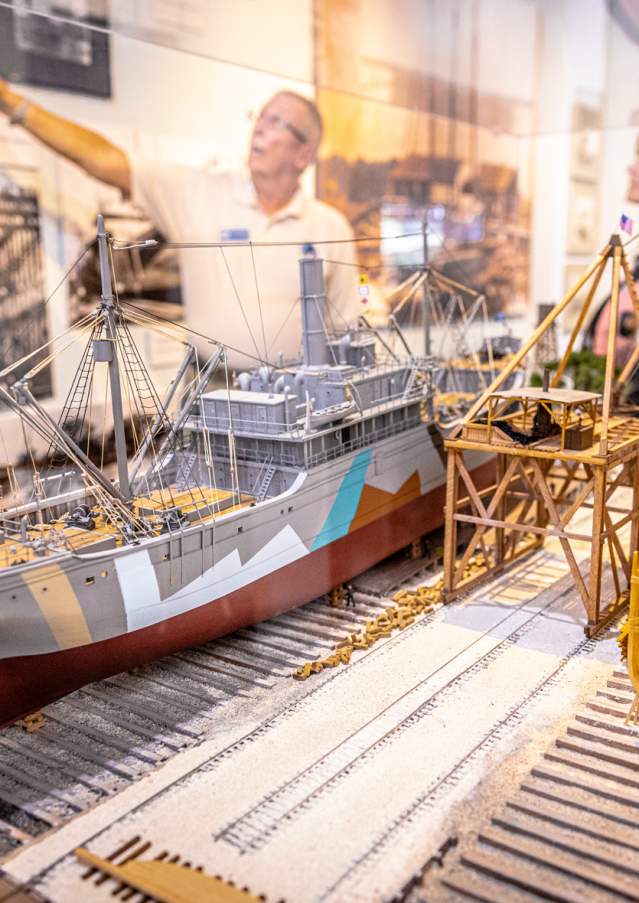St. Tammany Parish Historic Sites & Museums
There are several historic sites and museums in St. Tammany Parish where you can find a glimpse into our rich heritage. Native Americans were the first residents of the bountiful area now known as the Northshore, where lush forests and numerous waterways provided both sustenance and means of transportation. The Northshore's connection to New Orleans has always been prominent but only intensified after influencers like Bernard Marigny de Mandeville and the addition of the Causeway over Lake Pontchartrain, the world's largest continuous bridge over water connecting New Orleans to St. Tammany Parish.
History of St. Tammany Parish
Archaeologists today are excavating Northshore sites attributed to various tribes, including the Choctaw, Tchefuncte, Acolapissa, and Houma. Indian heritage is alive today in the descendants of the parish's original occupants and reflected in the names of area rivers, including the Bogue Falaya, Tchefuncte, and Abita. Artifacts and stories from these findings are featured at the Bayou Lacombe Museum.
European presence on the Northshore began in the 1700s as the parish passed between the French, Spanish, British governments, and eventually to the Americans. Part of what was known as "the Florida parishes," the Northshore was not part of the Louisiana Purchase in 1803. However, Louisiana became a state in 1812, and St. Tammany was defined as the parish between the Tangipahoa and Pearl rivers.
African-Americans, many of them free people of color, contributed their heritage and energy to the new parish and helping develop new industries, including timber, boat building, brick-making, and farming. Descendants of these early residents flourish in Lacombe. where Creole families have lived for generations and still celebrate such traditions as Les Toussaints Les Lumieres du Morte, an All Saints Day event for which families clean and decorate graves and light candles at dusk.
A number of the Northshore's towns were founded in the early 19th century.
Madisonville began as Coquille (shell) and was renamed in 1810 after then-president James Madison. Covington was founded in 1813.
Mandeville was founded in 1830 by a French New Orleanian of some entrepreneurial spirit, Bernard Marigny de Mandeville. Remnants of his sugar plantation still can be seen at present-day Fontainebleau State Park.
Naval battles were fought in the area during the War of 1812 and the Civil War; great wooden ships were built at Madisonville's Jahncke Shipyard for the U.S. Navy during World War I. Today, Maritime Museum Louisiana sheds light on the area's maritime history, working to preserve the Tchefuncte River Lighthouse (built-in 1837) and Northshore heritage.
The Northshore flourished in the 19th century. Affluent New Orleanians flocked to 'l'autre cote du lac' (the other side of the lake) for fresh air, spring water, and a resort lifestyle. The parish boomed, especially during the summers, as a healthful destination with numerous hotels, inns and restaurants. Visitors would sometimes stay months at a time, facilitated by daily steamboat excursions and later, the railroads.
Until the 1880s, trains leaving New Orleans for points along the east coast first had to head west, circling Lake Pontchartrain. After the New Orleans and Northeastern railroad mapped a route toward Slidell, the town began to flourish. The rail line from Slidell to Pearl River became an industrial hub in the early 1900s, bolstered by the Salmen Brothers' brickyards, lumber mills, shipbuilding yards and railroad company.
Though most of the grand hotels are gone (the Longbranch Hotel annex is still standing in Abita Springs), many historic buildings and homes remain. Driving tours of the historic areas of Mandeville, Covington, Madisonville and Abita Springs reveal 19th-century cottages, old-growth gardens, and centuries-old trees.
The connection between New Orleans and the Northshore has always been a strong one but intensified in 1956 with the completion of the first Causeway Bridge. A second span was added in 1969. The Causeway is the world's longest continuous bridge over water; it's a 24-mile-long straight line dissecting Lake Pontchartrain and providing scenic views of sailboats and brown pelicans.
Today, the Northshore is a thriving bundle of communities, each with its own personality, set amid green spaces and wildlife preserves.
The parish population grew considerably in the months following Hurricane Katrina in 2005, which devastated parts of the Northshore but left much of it with little damage. Hardest hit in St. Tammany was Slidell, on the eastern end of the parish; its historic Olde Towne area and many neighborhoods were devastated. Also, hard hit was the Mandeville lakefront, which lost historic homes and some businesses. Some 20 years on, St. Tammany is thriving. Olde Towne Slidell and the Mandeville lakefront are bustling with activity, especially its restaurants and shops. New hotels and shopping areas are coming online and companies moving in.
St. Tammany Parish is the most affluent in the state, has the best schools and boasts a high quality of life, despite also being among the fastest-growing in Louisiana. That may be because residents, old and new, recognize the importance of preserving the special qualities that have drawn people to the Northshore for years -- its natural beauty and its heritage.
